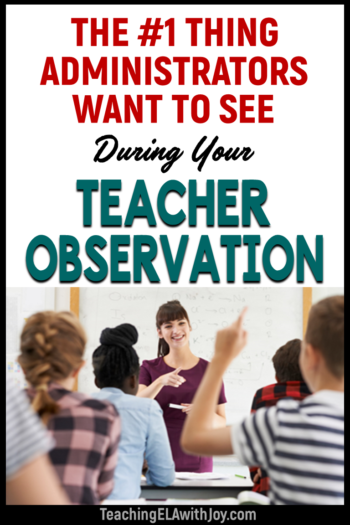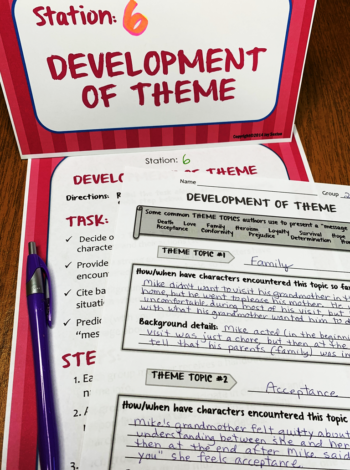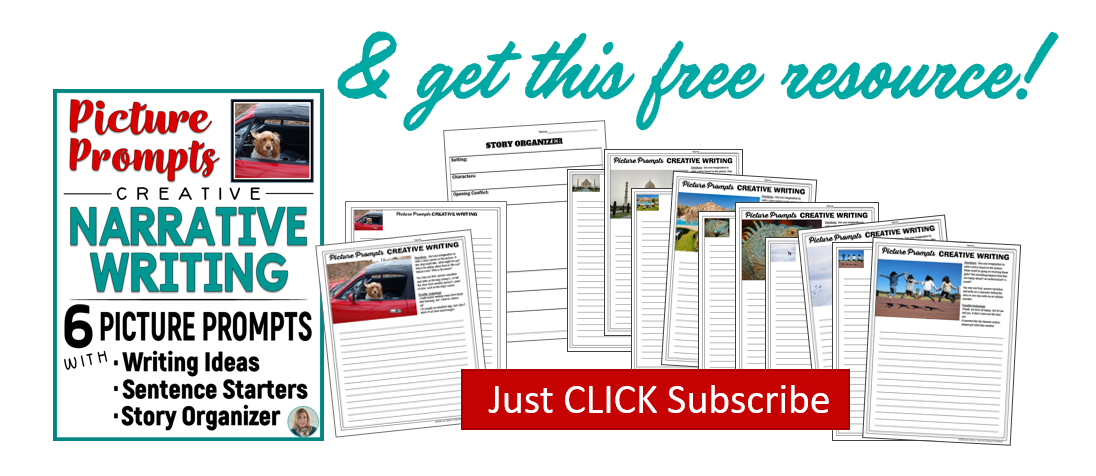You’re opening morning email at school and there it is: your teacher observation has been scheduled. Instantly, an uneasy feeling takes over. With all you have to do to keep classes running smoothly day to day, a formal observation is the last thing you want to deal with. Sometimes, that allotted date is anything but optimal! And it’s hard to think about what the perfect lesson should look like when you’re feeling stressed.
The Most Common Teacher Observation Fears
The thought of being formally observed can set off all kinds of fears, especially for new teachers. You might start feeling overwhelmed because:
- You think your administrator will want to see all kinds of best practices and you’re not sure you’re up on all of them
- You’ve only been given a few days’ notice so there’s no way you could possibly be ready
- You’re not sure if it’s okay to just go with what you have planned, even if it’s giving a test or class reading and doesn’t show you teaching something
- You’re afraid some students may not be focused and attentive during the lesson
- Your students use technology and you’re afraid technology may fail
The good news is, you can alleviate these worries with some strategic planning done early in the year. I would not suggest going ahead with an “ordinary” class period where students are testing or reading. Teacher observation ratings usually weigh heavily toward your yearly evaluation, so you’ll want to show your talents! On the other hand, you DO NOT need to incorporate every best practice on record.
The #1 Thing Administrators Want to See
If there’s one idea that will help you streamline your planning, it’s knowing the most important thing administrators are looking for during a teacher observation. Can you guess what it is? STUDENT ENGAGEMENT. Engagement means students are drawn in to your teaching and motivated by the activities you provide for them. And the more engaged you keep your students, the less chance of behavior issues. I mean, who wouldn’t love hearing these words from your administrator at a post-observation meeting: “Your students were really engaged!”
Ways to Achieve Student Engagement in the Lesson Plan
Student engagement most likely occurs in your classroom in a number of ways. Generally speaking, topics and activities that are meaningful result in engagement. Be sure to include at least a couple methods that in turn allow for differentiation (which is probably the #2 look-for) when your formal observation comes around.
Here are some ideas:
- Begin class with an engaging bell ringer. Administrators are impressed when they see students following routines you have set for them. Starting class with a bell ringer gets the students quickly settled in and can provide a “teachable moment” around an important skill or spark a discussion.
- Incorporate peer collaboration with the practice activities of your lesson. Students enjoy pairing up or working in small groups, and either one works fine to promote engagement. A sharing out of ideas can easily follow, either whole class or to other pairs or groups.
- Introduce a concept by bringing in an object of some sort to get the students’ attention. One time for an observation, I brought in a big head of broccoli and set it on the front table. I was trying to demonstrate the concept of contrasting (or conflicting) points of view. I explained how much I love broccoli, steamed with butter or with a creamy cheese sauce. Of course I got a few “Yuck, I can’t stand broccoli” comments right away. I had students describe their own points of view toward broccoli on an index card in 2-3 sentences. Then they shared within small groups and tried to match two that were extremely contrasting. Students volunteered to share the two contrasting points of view whole group. Voila! All students engaged, concept learned, all from a big head of broccoli.
- Incorporate some form of technology. Students love technology! Since most students have computers at their fingertips these days, consider having them on devices for some part of the lesson. Think quick research, using an app, etc. Just be sure to have an alternative means to accomplish the task in case technology fails that day or that class. (For example, if students are accessing an online article, print out a class set.) If you have a Smart Board, of course, use it for something. At least display the goals, objectives, or standards for the lesson. Catch their eyes with some bright graphics or images.
- Hit the Play button on an already cued-up short video. Look for a really fun one that supports the concept
- Incorporate current events. Students demonstrate more buy-in around current topics, so pull in an interesting news story or article as part of the lesson.
Maximizing Student Engagement for Your Observation
Today, it’s pretty much an expectation that a top-notch lesson plan allows students the opportunity to get up out of their seats. Students love movement, so incorporate an activity such as stations, a gallery walk, a learning game, or an escape room. To ensure success on observation day, you’ll need to model and give students practice with the the required procedures in advance. Start incorporating one or more of these activities early in the year. Then, alert them the day before the observation, “Tomorrow we’ll be doing learning stations (or a gallery walk, etc.).” They will already be familiar with the procedures, engagement will be high, and your administrator will be impressed!
I used Literature Stations with a short story early in the year. Students had practice with the procedures and they enjoyed the activities. When my teacher observation email came with four days’ notice, we were reading a class novel. At first I panicked because I knew it was important for my classes to keep up the reading. I decided that we would read two chapters in the classes leading up to my observation date. Then we could go into Literature Stations (for the observation) based on those two chapters!
The lesson plan was easy:
- We started with a grammar skill bell ringer displayed on the Smart Board. I had students check their responses quietly with a partner before we went over the answer.
- We viewed a two-minute YouTube video based on a real-life topic providing further background info for our novel.
- I called out the groups (which I had announced the day before) and they all stood up and went to their stations.
The students did a great job that day in their groups, with lots of discussion and deep thinking. We had time to rotate through three stations, and did three more the next class. The key here is, implement your “get out of your seat” activities early in the year so that students learn the procedures. Then you can pull one out and rock the observation!
If you’d like some tips about managing station work, just click on this title: Secrets to Managing Station Work in Middle School
So, conquer your teacher observation fears by aiming for student engagement at the heart of your lesson. Start implementing one or more of these activities now in connection to topics you are teaching. Then when you receive that dreaded email, you’ll be equipped to plan and teach an awesome lesson.







Thank you, I will take this advice has my student teaching is approaching soon. I admit I am very nervous.